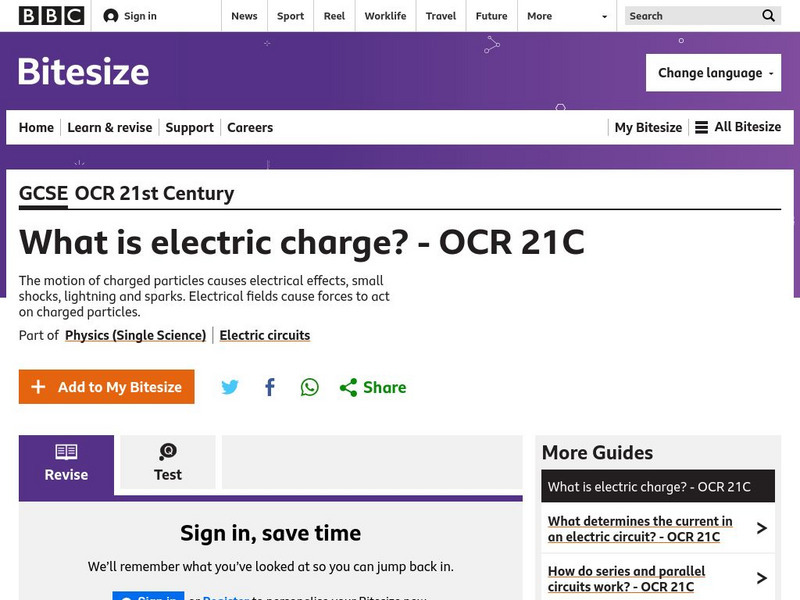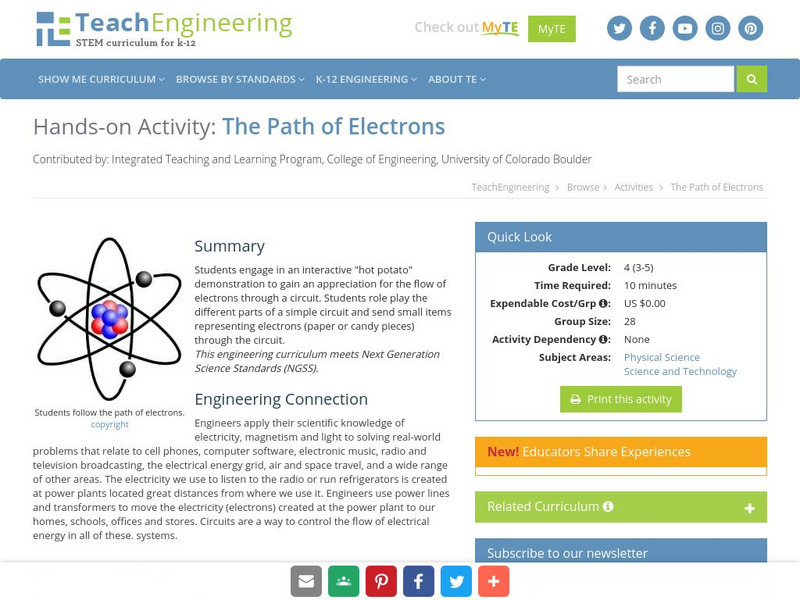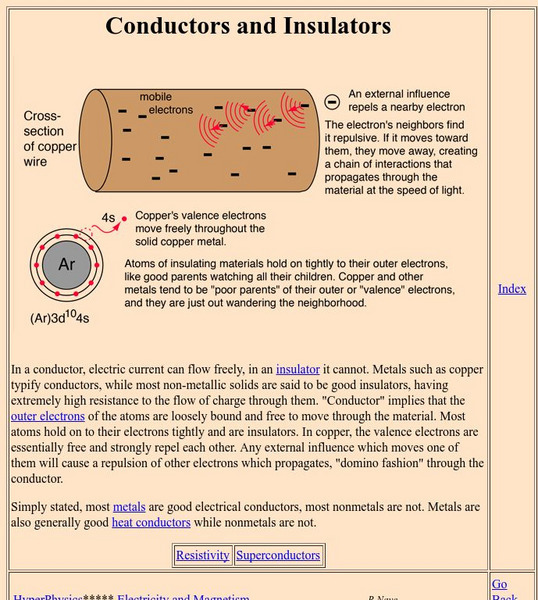Hi, what do you want to do?
Curated OER
A Guide (on the Side) to Physics
Students engage in a lesson that is concerned with the concepts related to the study of Physics. They participate in class discussion and list common misconceptions of Physics. Students write and discuss the problem of Science illiteracy.
Curated OER
Activity #9 Extending Oil Well Production
Students simulate methods used to extend the effective life of an oil well by extracting less available oil. They identify techniques which can be used and evaluate their effectiveness. Pupils are introduced to rock size and temperature...
Curated OER
Atoms, Elements, Molecules, and Compounds
In this elements worksheet, students review the Bohr model and define negative and positive subatomic particles. Students compare molecules and compounds. This worksheet has 11 short answer questions and 4 problems to solve.
BBC
Bbc: Gcse Bitesize: What Is Electric Charge? Ocr 21 C
This lesson focuses on electric charges. Electric current is the flow of electric charge. Some insulating materials become electrically charged when they are rubbed together. A substance that gains electrons becomes negatively charged,...
Physics Classroom
The Phyics Classroom: Electric Field and the Movement of Charge
This interactive tutorial teaches students about he reasons for why charge flows through wires of electric circuits and the variables that affect the rate at which it flows. Students can take the interactive quiz to assess what they have...
Physics Classroom
The Physics Classroom: Common Misconceptions Regarding Electric Circuits
In this tutorial, preconceived ideas regarding the nature of charge flow and the role of a battery in a circuit are addressed. In many instances, these preconceived notions about charge flow and batteries are incorrect ideas and are...
Energy for Sustainable Development
Esd Bulgaria: Kids & Energy: Electricity
Electricity is the flow of electrical power or charge. It is a secondary energy source which means that we get it from the conversion of other sources of energy, like coal, natural gas, oil, nuclear power and other natural sources, which...
Physics Classroom
The Physics Classroom: Electric Current
This tutorial introduces the concept of electric currents. Take the interactive quiz to assess your understanding.
ClassFlow
Class Flow: Coulomb's Law
[Free Registration/Login Required] This resource provides information about Coulomb's law.
TeachEngineering
Teach Engineering: The Path of Electrons
Students engage in an interactive "hot potato" demonstration to gain an appreciation for the flow of electrons through a circuit. Students role play the different parts of a simple circuit and send small items representing electrons...
Science and Mathematics Initiative for Learning Enhancement (SMILE)
Smile: Series and Parallel Circuits
A teacher lesson plan which could be easily converted into an idea for a student project or presentation. Ideal for pre-high school students. This page describes an activity in which the history of electric circuits, the nature of...
Physics Classroom
The Physics Classroom: Resistance
An electron traveling through the wires and loads of the external circuit encounters resistance. In this tutorial, the concept of resistance is introduced. For an electron, the journey from terminal to terminal is not a direct route....
Science and Mathematics Initiative for Learning Enhancement (SMILE)
Smile: Resistances in Series and Parallel Circuits
A teacher lesson plan is provided here. This page describes two activities in which the effect of multiple resistors on the current and overall resistance of both series and parallel circuits are investigated. Complete activity...
Science and Mathematics Initiative for Learning Enhancement (SMILE)
Smile: Simple Circuitry and Series Circuit
A teacher lesson plan which could be easily converted into an idea for a student project or presentation. This page describes an activity in which the basic nature of a circuit and the concepts of a series circuit are investigated....
Georgia State University
Georgia State University: Hyper Physics: Conductors and Insulators
This site from Georgia State University provides information on the distinction between conductors and insulators. Factors contributing to the insulating ability of materials are discussed.
















